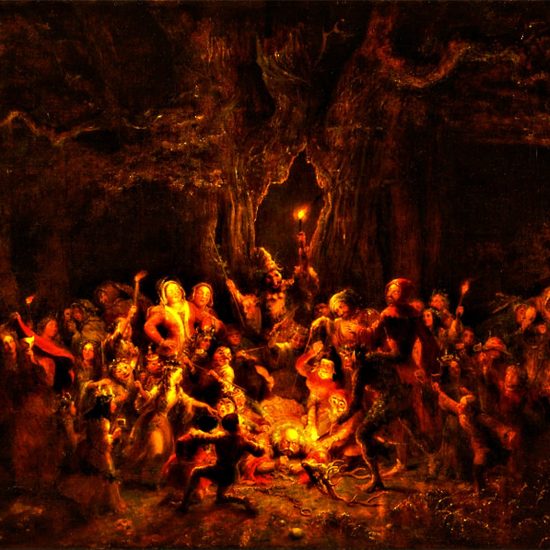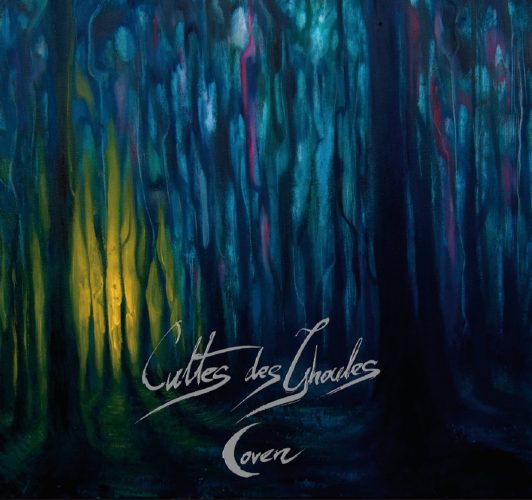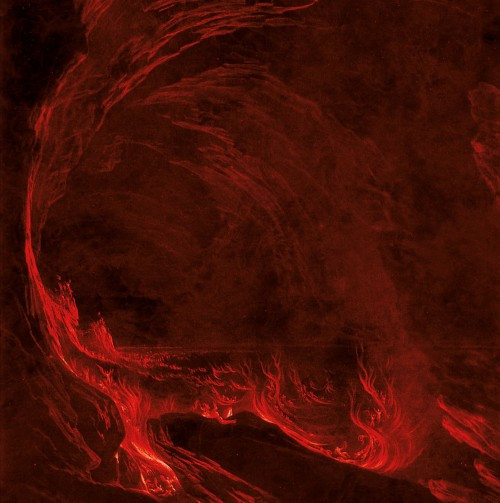
from a painting by George Cruikshank (1792–1878)
This year Halloween falls on a Sunday, and thus lines up nicely with our weekly effort to blacken the Sabbath. It also provides an occasion for a brief reminder about how Halloween came to be, though I’m sure many of you already know it. The following sketch is drawn from this article, which appeared in this morning’s Washington Post.
In a nutshell, the holiday traces its roots to a celebration called Samhain (pronounced “SOW-in”) that was observed by Irish Celts for thousands of years before the arrival of Christianity in the 6th century CE. Literally translated, it means “summer’s end,” and was thus a new year’s celebration. It was a time when they thought the veil between worlds was at its thinnest, and that all kinds of things could cross over on that night.
After Christian missionaries arrived in Ireland they eventually did what they did all over the world — they attempted to co-opt existing pagan traditions for their own purposes, to aid in converting the “heathens”. Continue reading »


